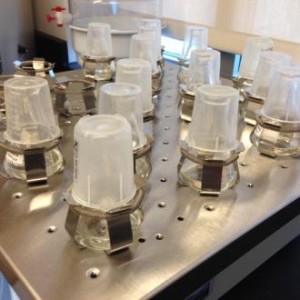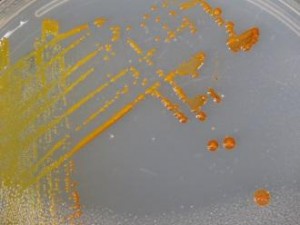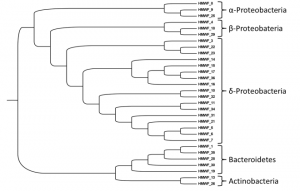[editorial note: This is our first ‘guest post’. It comes from Mario Muscarella, and is about the research he is conducting with his advisor, Dr. Jay Lennon, at Indiana University. I add one comment; description of bacterial diversity is difficult to place in the same framework used for other organisms, since conventional notions of ‘species’ don’t work very well in the strange 
 world of bacteria (or prokaryotes). Regardless of that complication, bacterial communities are clearly hugely diverse and critically important in ecosystem processes. — Kerry Woods]
world of bacteria (or prokaryotes). Regardless of that complication, bacterial communities are clearly hugely diverse and critically important in ecosystem processes. — Kerry Woods]
Beginning in 2011, Mario Muscarella and Dr. Jay Lennon (Indiana University) have been studying the ecology of bacteria in the lakes of the Huron Mountains. Originally, their goal was to survey how bacterial communities and their resource use changed from lake to lake. However, improvements in molecular tools have driven expansion of the project. Original plans called for using genetic markers to identify thousands of types of bacteria in each lake; in fact, they have been able to identify millions of bacterial types. They are using this knowledge of the Huron Mountain bacterial communities to study how resource quantity, quality, and diversity affect microbial community composition.

Tree showing genetic similarities among the 30 bacterial lines of the fully sequenced ‘reference collection’. Similar (and presumably closely evolutionarily related) lineages are linked further to the right in the diagram.
In a side project, Muscarella and Lennon are focusing on a subset of bacterial ‘lines’ from Huron Mountain lakes. Using inert beads and a complex carbon resource bait, they have isolated 30 bacteria – the Huron Mountain Wildlife Foundation Culture Collection. These represent 5 of the major groups of bacteria and differ in growth physiology. The collection represents five of the major groups of bacteria, and is being used to study differences in growth physiology, resource specialization, and life history trade-offs. So far the team has been able to use culturing and genomic techniques to characterize the metabolism of each isolate. They are now using more comparative techniques to explore the growth and efficiency of each isolate on a variety of carbon resources. This research is providing insights into microbial biodiversity and ecological specialization.
In addition to funding received form the Huron Mountain Wildlife Foundation, the team at Indiana University has used data gathered from the community surveys and bacterial isolates to obtain further funding from the National Science Foundation and the Indiana Academy of Sciences.
